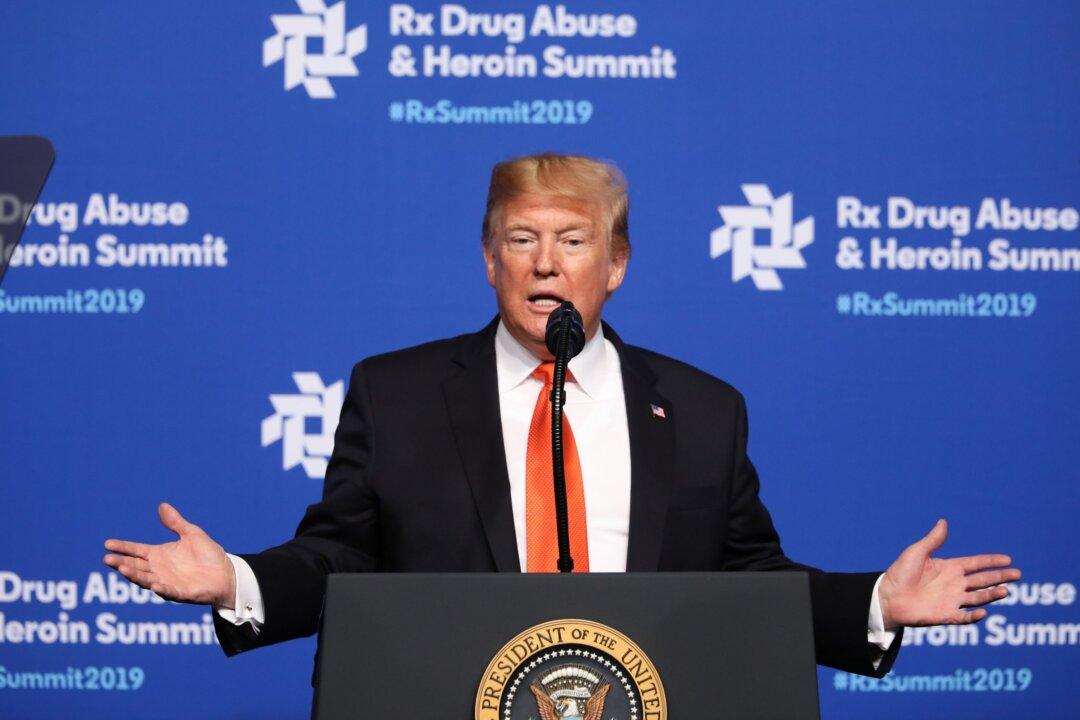President Donald Trump highlighted faith-based initiatives as a major part in the administration’s efforts to resolve the epidemic of opioid abuse in the country, which Trump declared a national emergency in 2017.
“My administration is committed to ensuring that every citizen can live with dignity and purpose and proudly pursue the American dream,” Trump said at the Rx Drug Abuse and Heroin Summit in Atlanta on April 24. “Critical to this effort is my administration’s strong support for faith-based initiatives.





